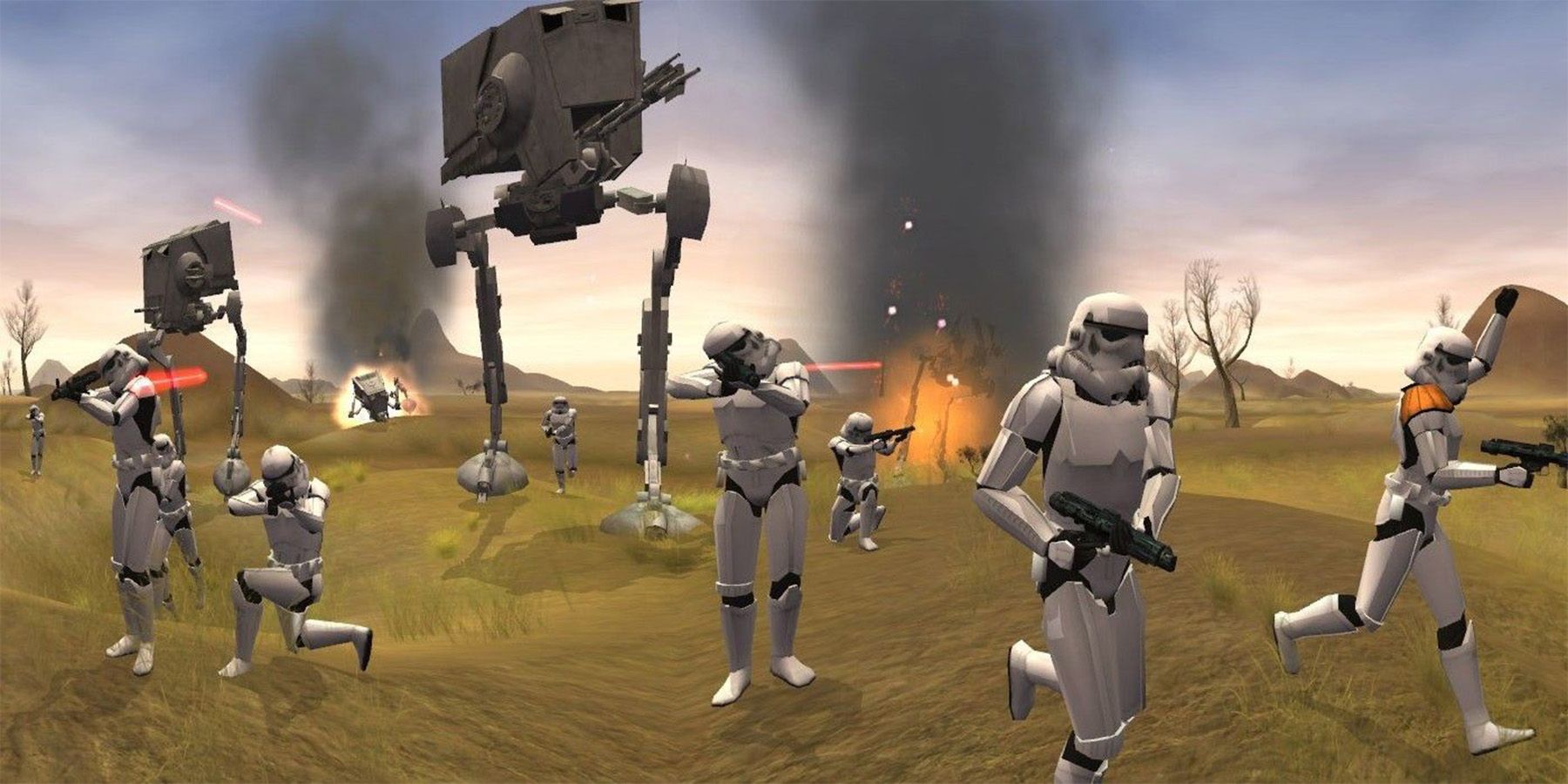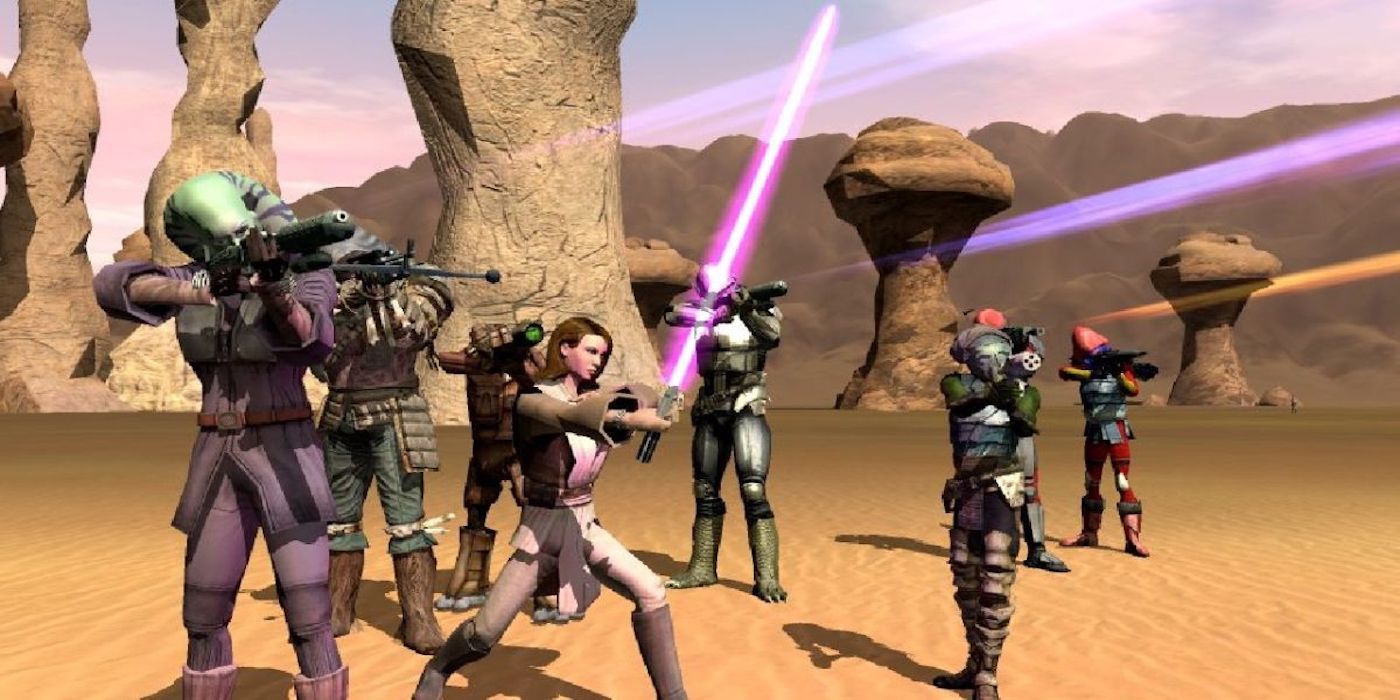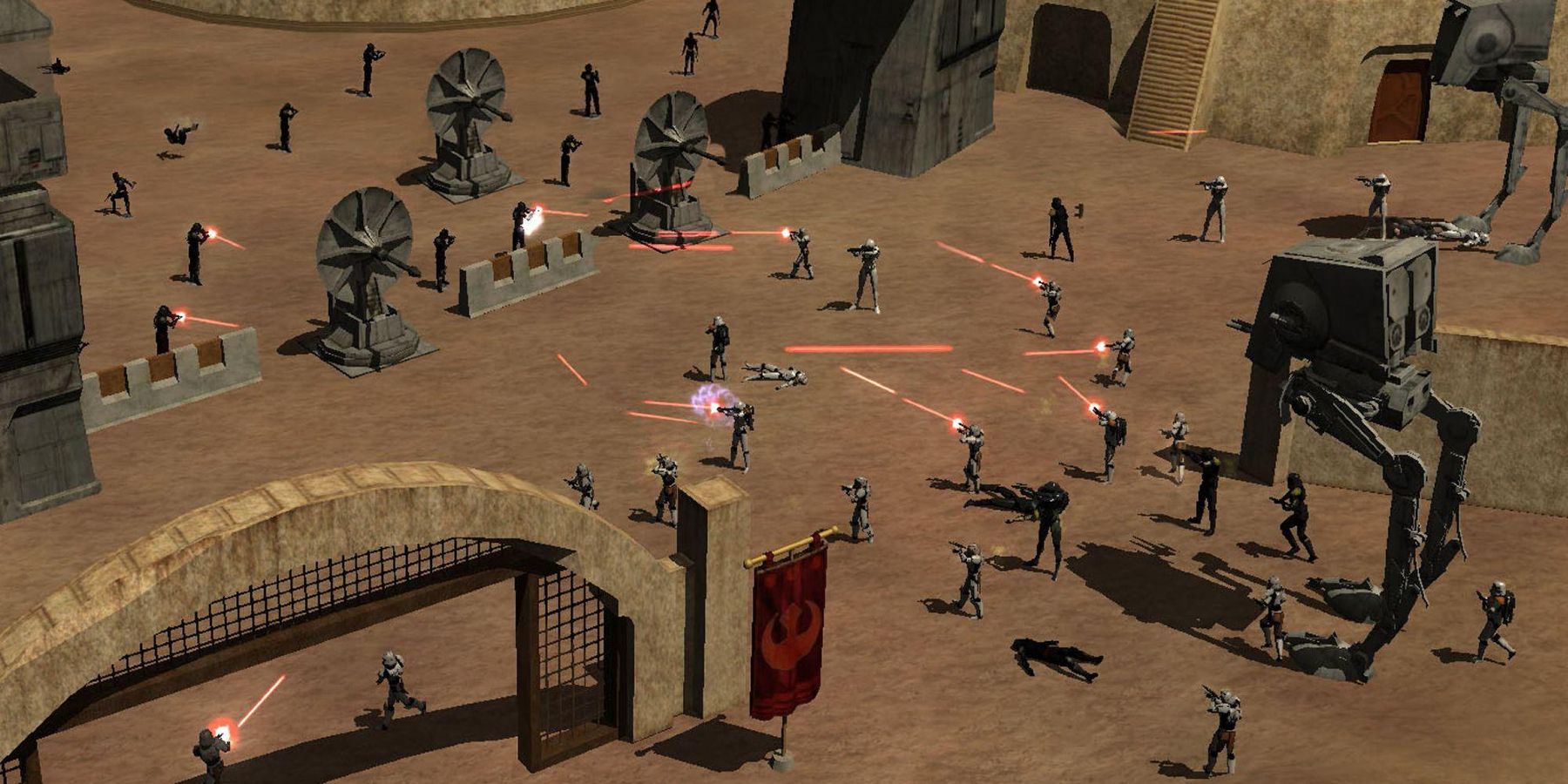Before Star Wars: The Old Republic let Star Wars fans tell their own Star Wars story, there was Star Wars: Galaxies. Released in 2003, Star Wars: Galaxies brought players to the galaxy far, far away after the destruction of the Death Star but before the events of Empire Strikes Back. Players were able to create their own Star Wars character and explore iconic Star Wars locales like Tatooine and Naboo. Along their journey they would also encounter popular characters like Chewbacca, Luke Skywalker, and even Watto.
When Star Wars: Galaxies released, it was met with high praise from both critics and fans. Sadly, the game was shut down five days before the launch of Star Wars: The Old Republic, and the franchise has not looked back. While there have been many private emulator projects attempting to revive the beloved MMO, nothing has compared to the original title. As Disney looks for new experiences for Star Wars fans, it should consider looking back at the old MMO that delivered the dream Star Wars title.
The Gameplay of Star Wars: Galaxies
Star Wars: Galaxies began with having the player create their own Star Wars character. They were able to choose between ten different races like Human, Twi'lek, or Wookiee. Each character would also get to choose from nine different professions that ranged from Jedi and Bounty Hunter to Entertainer. These professions served as the classes of Star Wars: Galaxies and were where the majority of the progression was focused. Players could also choose between three optional professions that were separate from the main profession; these were the Pilot, Chronicler, and Politician. Each main profession also had three different areas that the player could specialize in.
The first expansion, Jump to Lightspeed, gave players the ability to purchase their own ships to traverse the galaxy. These ships ranged from small one-man fighters to large gunships. Using these ships, players could explore 12 different planets from Star Wars along with 12 different space zones. On these planets, players would encounter iconic characters and go on fun-filled missions set in-between the movies.
Perhaps one of the most interesting features that Star Wars: Galaxies included was the ability for players to erect entire cities. Individual players could build and decorate their own buildings, which could be houses, cantinas, theaters, hospitals, guild halls, or city halls. When these buildings were placed around each other, it would become a city and players could elect others to become mayor. Mayors had the ability to grant city members the right to place certain buildings while banning certain players from using specific civic structures. As a city grew, it could unlock vehicle repair garages, shuttleports, cloning facilities, garden displays, and more cantinas or hospitals. Every three weeks, a new mayor was elected based on ballot box votes, and the entire city could change.
The systems in place in Star Wars: Galaxies allowed for a player-driven economy, which formed a virtual division of labor. Due to the professions, players would group up in player guilds related to certain professions, and their role in the galaxy was decided based on their profession. Traders spent most of their time selling goods, Entertainers would have to entertain other players, Bounty hunters would traverse the galaxy to hunt their prey, and Medics would spend their time healing others.
A New Star Wars: Galaxies is a Must
Star Wars: The Old Republic has taken over the market of the Star Wars MMO and has been providing Star Wars fans with a way to tell their own story in the galaxy for years now. However, the biggest difference between that and Galaxies is that The Old Republic is very much a story-driven Bioware title. Star Wars: Galaxies put more of a focus on a player driven world with its cities and economy, while The Old Republic is focused on telling a Star Wars story. Both directions are a lot of fun for Star Wars fans, but there was something special about the way Star Wars: Galaxies gave players control over their own story during the time of the original trilogy.
Since they are both very different games, there is little reason why Star Wars: Galaxies could not work alongside The Old Republic. A new version of Galaxies could take advantage of new hardware and fully flesh out its game worlds, and maybe even add more. It could also be set in the time between the original trilogy and sequels to further flesh out that time period and allow more player freedom, as no films are set during that time. Letting players make their own character, traverse the galaxy, and settle down in a player-made city made Galaxies feel special, and a new version could take all that and make it even more in-depth.
The player city system in Star Wars: Galaxies could be expanded to include even more building types. Galaxies let players construct a multitude of different building types, but there are even more that a city could use. Maybe some players could need to construct moisture farms to provide for the town, while every good city has a couple of shops that people can buy wares from. Further, some Star Wars fans have always wanted to live out their Watto dreams by running a scrapyard. On top of that, sometimes a city in Star Wars needs a militia, so players should be allowed to form one. They could elect a marshal similar to how they elected a mayor and then join the militia to defend the town against everyone who wants to do it harm.
As of now, Star Wars: Galaxies is the only Star Wars game that truly lets players tell their own story, and that needs to be continued. It allowed a level of freedom that has not been replicated since, and Star Wars fans deserve to see the concept expanded upon. With the new focus on delivering high quality Star Wars titles from a multitude of developers, it only makes sense for a studio to craft a successor to Star Wars: Galaxies.



